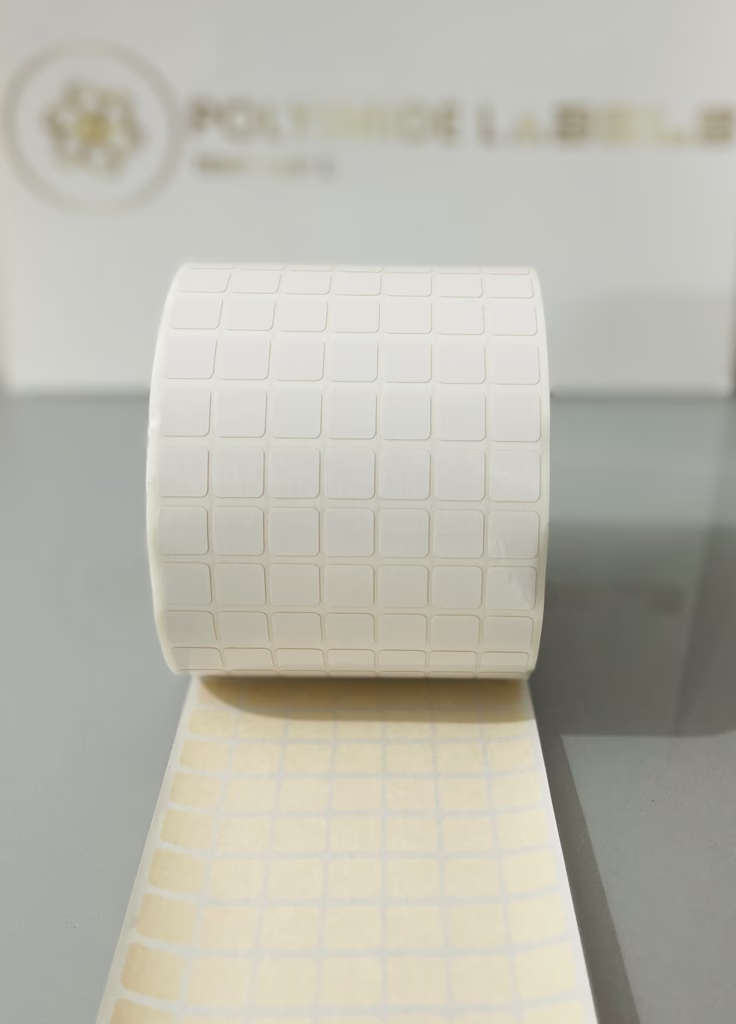Polyimide Adhesive Labels

A polyimide Adhesive label is a high-performance adhesive label made from polyimide film, known for its exceptional thermal, chemical, and mechanical resistance properties. We should attach importance to polyimide labels because they are essential in applications where durability, resistance to high temperatures, and harsh environments are crucial.
Why are the polyimide labels important?
- High-temperature resistance: Polyimide labels can withstand extremely high temperatures, making them suitable for applications in electronics, aerospace, and automotive industries.
- Chemical resistance: These labels are resistant to various chemicals, oils, and solvents, ensuring their durability in challenging environments.
- Mechanical stability: Polyimide labels maintain their integrity and adhesion under mechanical stress, making them ideal for use on flexible or curved surfaces.
- Traceability and identification: Polyimide labels enable accurate identification and tracking of components and products in harsh conditions, ensuring quality control and compliance with industry standards.
Description
What is the scope of application of polyimide labels?
The scope of application for polyimide labels includes:
- Electronics: Labeling of printed circuit boards (PCBs), components, and electronic devices that undergo high-temperature processes, such as soldering or reflow ovens.
- Aerospace: Identification and tracking of aerospace components exposed to extreme temperatures and harsh environments.
- Automotive: Labeling of under-hood components, engine parts, and exhaust systems that experience high temperatures and chemical exposure.
- Industrial manufacturing: Labeling products and components that require durability and resistance to chemicals, abrasion, and extreme temperatures.
- Laboratories: Labeling equipment, samples, and containers exposed to chemicals and high temperatures.
How to select the correct polyimide labels?
To select the correct polyimide labels, consider the following factors:
- Temperature range: Choose a label with a temperature range suitable for your specific application requirements.
- Adhesive: Select an adhesive compatible with the surface material and capable of maintaining its bond under the required temperature and environmental conditions.
- Size and shape: Opt for a label size and shape that fits the available space on the product and displays the necessary information.
- Printability: Ensure the label material is compatible with your printing method and provides clear, legible print quality under the intended conditions.
- Industry standards: Verify that the label meets relevant industry standards and regulations for your specific application.
What raw materials can be selected for polyimide labels?
The primary raw material used for polyimide labels is polyimide film. This material offers excellent thermal, chemical, and mechanical resistance properties. Additionally, a suitable adhesive is required for the specific application, which may include silicone-based adhesives or acrylic adhesives designed for high-temperature environments.
What should I pay attention to when pasting polyimide labels?
- Surface preparation: Ensure the surface is clean, dry, and free of dust, dirt, or grease for optimal adhesion. A well-prepared surface will help the label adhere securely and function effectively.
- Temperature: Apply the label at an appropriate temperature, as extreme temperatures can affect adhesion and the performance of the label. Follow the manufacturer’s recommendations for the ideal temperature range for application.
- Alignment: Properly align the label to ensure a professional appearance and maximize its effectiveness in providing essential information about the product.
- Application pressure: Apply firm, even pressure to the label to ensure it adheres securely and without bubbles or wrinkles. This is important for maintaining the integrity of the label and its ability to withstand harsh conditions.
- Compatibility: Make sure the label material and adhesive are compatible with the surface material and any additional coatings or treatments applied to it.
- Storage conditions: Store unused labels in a cool, dry place away from direct sunlight to prevent damage or degradation.
- Follow manufacturer’s instructions: Always adhere to the manufacturer’s guidelines for label application and handling to ensure optimal performance and durability.
